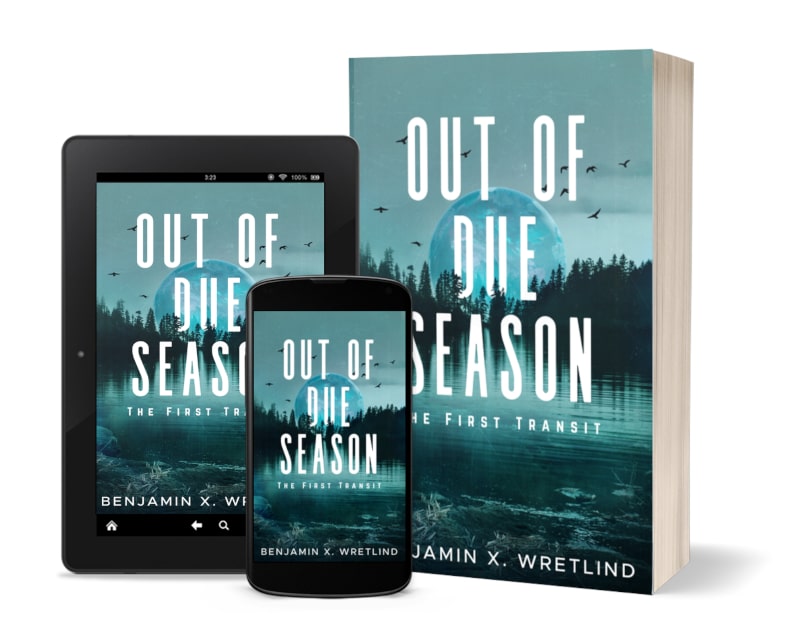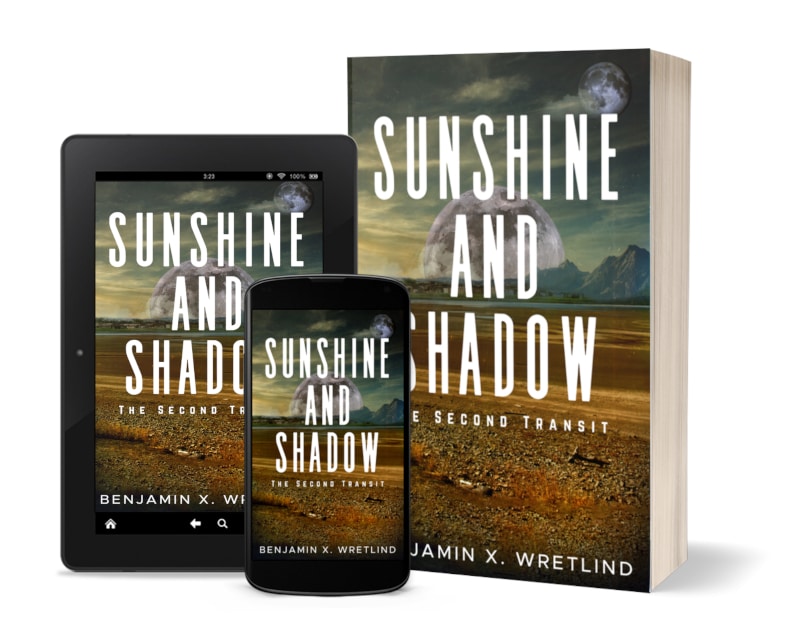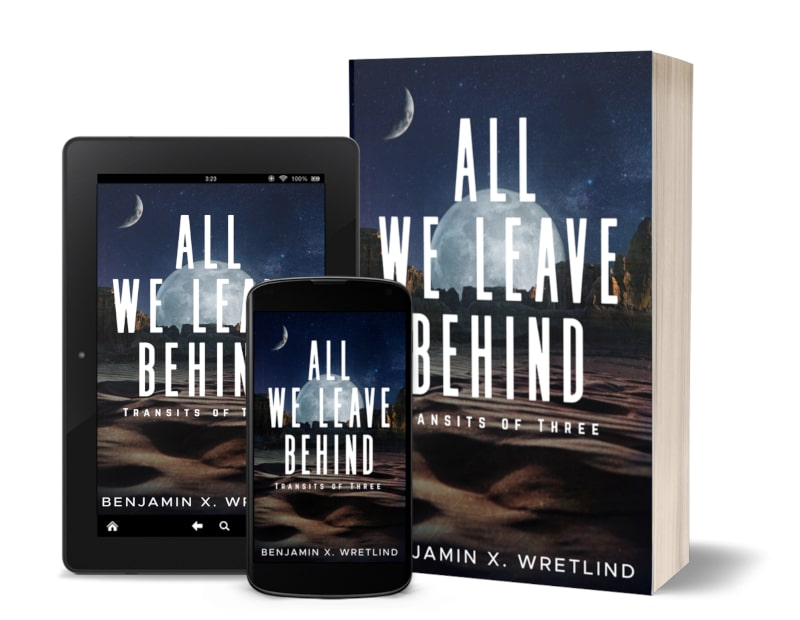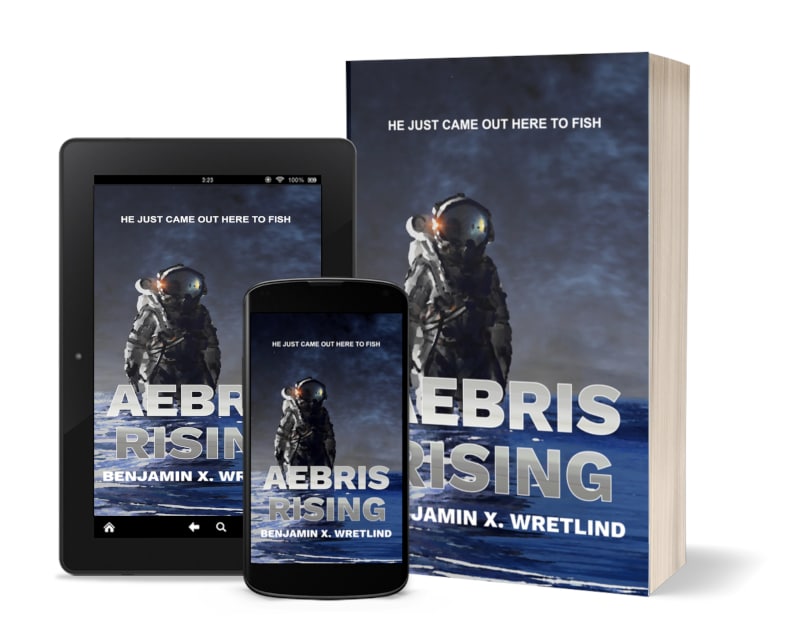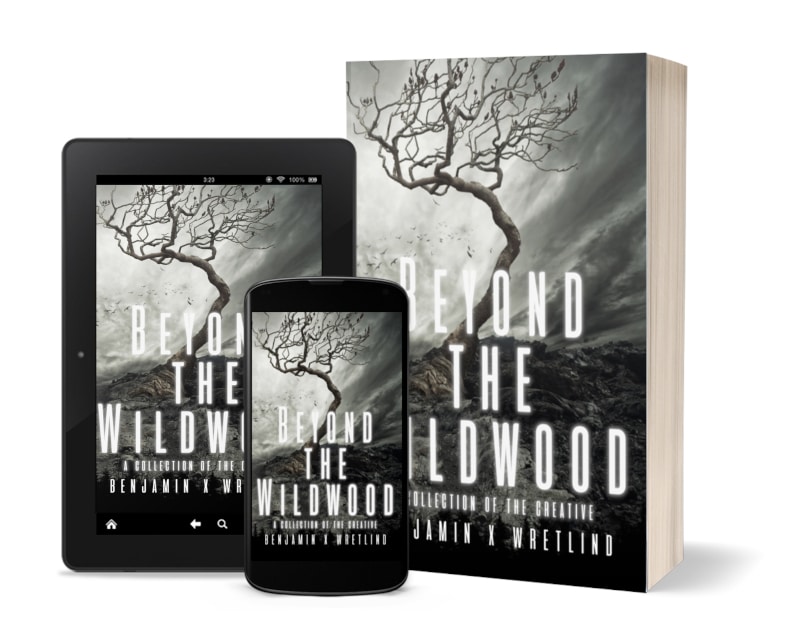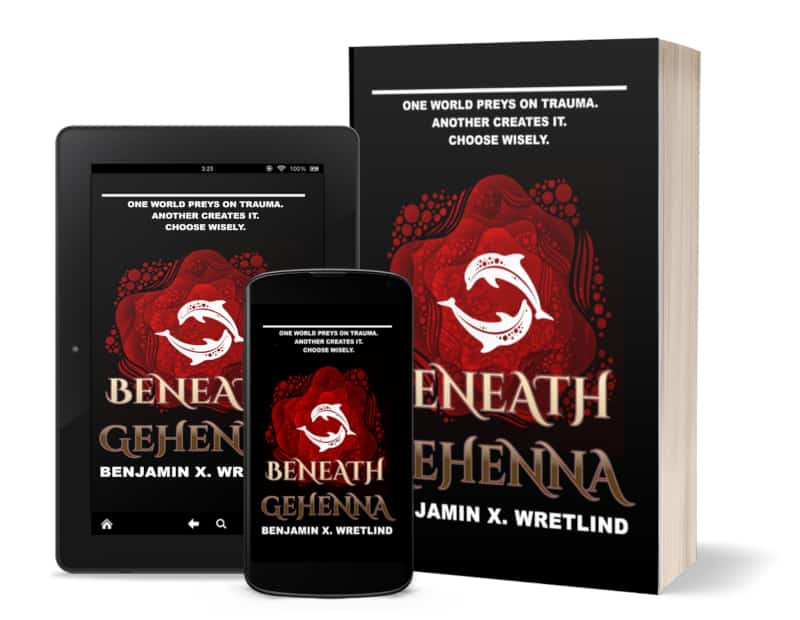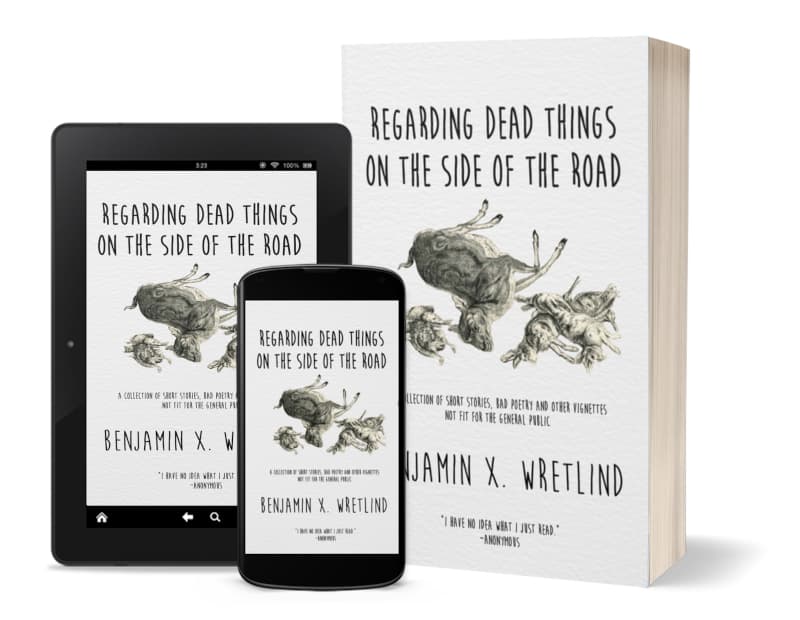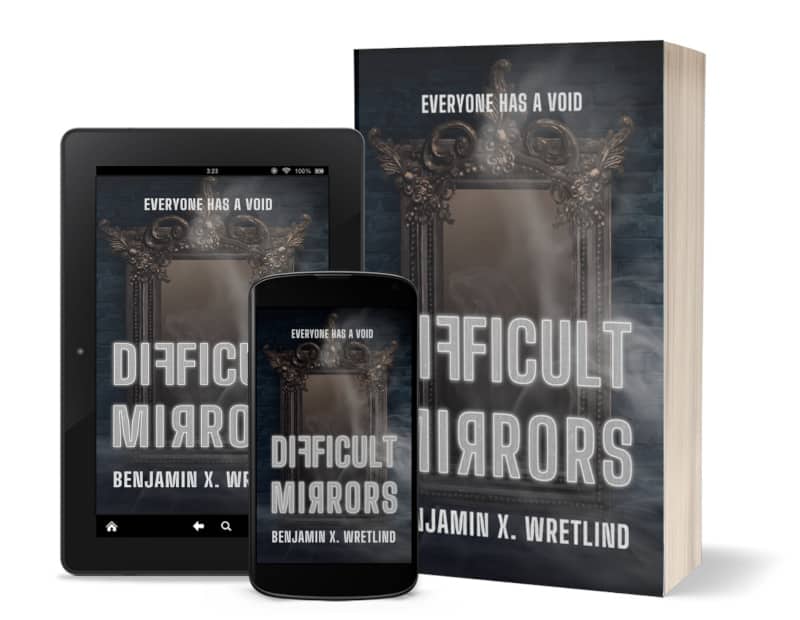Review: Bibi Blundermuss and the Tree Across the Cosmos by Andrew Durkin – A 2022 Indie Author Review Selection
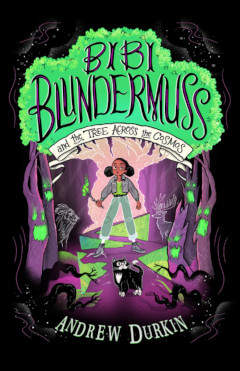
Description • The Review • Author Interview • More About the Author
Description (from Amazon.com)
Twelve-year-old Bibi Blundermuss is terrified of trees. Being around them makes her dizzy and sick to her stomach—even comatose. So, when her only to chance to find her missing parents means climbing a magic tree in the forest near her home, she almost doesn’t take it.
When Bibi grits her teeth and scales the trunk, the tree grows—so violently that she and her cat Eek are catapulted into another world. Here, she befriends a herd of elk, on the run from a pack of vicious white lions. And she discovers, to her amazement, that her mother is a witch who has been protecting the elk with a poison flower spell, which keeps the lions away.
Yet the longer Bibi stays in the world of the elk and lions, the less sure she is that her mother is truly on the elks’ side—or even on Bibi’s side. In the end, a dangerous journey into the lions’ lair and a reunion with both parents uncovers a secret that changes Bibi’s life forever. Drawn into an epic snowbound battle against an army of zombie trees, she must face her greatest fear to discover her greatest power.
The Review
There are exactly three books I have read more than twice: Dandelion Wine, The Neverending Story, and Mythago Wood. Bibi Blundermuss and the Tree Across the Cosmos by Andrew Durkin may end up being the fourth. When I look at why I loved reading those other three books, it is because the author either succeeded in taking me to a new and fantastical world or it was just plain Ray Bradbury. Bibi Blundermuss fits with the former: I love to be transported, as Bibi was, to a truly magical world.
From the opening scene to the end, there is nothing but action. Bibi’s hylophobia–a fear of trees–enhanced the anxiety of our main character and made her journey that much more incredible. When her cat, Eek (Ekatarina) disappears, Bibi must enter a forest that frightens her. What she finds is a swarm of bees, an unusual tree, and the voice of her mother telling her to climb. It was that climb that really endeared me to the story.
Even with Bibi’s anxiety in overdrive, she wants nothing more than to find her parents. The tree takes Bibi and Eek into outer space and deposits them on another planet before disappearing again, leaving them stranded. It is a truly magical way to be transported to a fantastical world, much like Jack’s Beanstalk, the wardrobe of Narnia or the book in The Neverending Story.
There are very few slow moments in this book. Durkin does a fabulous job creating a world that is rich with imagination. I could see and feel much of Bibi’s anxiety, and if I were a middle schooler, I would read this again and again. Overall, I highly recommend Bibi Blundermuss and the Tree Across the Cosmos by Andrew Durkin with its grand imagination and exciting journey. It is a quick read to anyone who relishes that feeling of being a kid again.
Available at Amazon: https://www.amazon.com/dp/B09VKJD3LS/
Author Interview
Hylophobia is not one of the more common phobias out there. What gave you the idea to give that to Bibi?
Dealing with phobia was a big part of my own youth. In grade school and middle-school I suffered from a severe fear of poisoning, sometimes known as “iophobia.” I’ve since worked through the “severe” part, but the neurological mechanism is still there—just a part of my brain wiring that I’ve had to learn to live with. Giving Bibi a phobia felt natural because it was an extension of experiences I had as a kid (including the embarrassment and self-consciousness).
As for hylophobia in particular—for this story, I wanted a phobia that was unusual, and I wanted a phobia that the adults in Bibi’s life could use against her, in their (misguided) attempt to “protect” her from family secrets.
Fictional locations are typically based on an author’s experience with real life. Fantastical locations can also have elements of an author’s experience. Was there anything in this book that you would say you drew upon from memory?
Definitely! Climbing trees was a big part of my youth, too. In the yard of the house where I grew up in New Jersey, I probably spent more time in trees than I did on the ground. I was the kid who wanted to climb to the highest branch—a fear of heights was not in my phobia repertoire! Something about being up there spurred my imagination, and I found it a good place to make up stories. In fact, I wouldn’t be surprised if I imagined a prototype of Bibi’s story back then, only to forget it until I was an adult.
Zulu and Dutch heritages are not often used in fiction. What research did you do inside these cultures?
Ironically—given that I’m a white guy with Irish roots—I’m more interested in Zulu than Danish culture, so that’s probably where I did the bulk of my research, especially around the resonant, layered connotations of the beautiful word “sawubona.” It helps that I’ve had a lifelong love of South African music (the Zulu people are not the only ethnic group in South Africa, but they are the largest)—particularly mbqanga, a popular music style dating from the 1950s and featuring artists like the Mahotella Queens and Miriam Makeba; but also jazz musicians like Hugh Masekela and Abdullah Ibrahim. This is some of my favorite music in the world. And I believe music is one of the best ways to learn about a culture different from your own.
Do you have a writing routine?
Most of the time, yes. I try to allow myself to be obsessive about writing as much as I can. I try not to let myself feel guilty about that obsessiveness (though I do sometimes). Most days I spend at least two hours on whatever the current manuscript is. Being consistent—even through weekends, even on days when I know the writing is sub-par, etc.—helps me with the overall creative flow. At the same time, limited and intentional breaks can give perspective on whatever writing issue I’m trying to work through.
Also: I used to be exclusively a late-night writer, but these days I tend to get my best work done in the morning.
I’m a fan of easter eggs in movies and novels. Did you have any in this one?
I don’t know if there are easter eggs, per se, but as a former English lit grad student I apparently couldn’t help avoiding various allusions, symbols, and references. For instance, the king of the lions, Valmyr—the main villain until he is superseded by Praetor Wight—is described as having red teeth, as in Tennyson’s “Nature, red in tooth and claw.” Yggdrasil is the sacred tree of Norse mythology. Corineus is a figure from British legend, known as a giant killer. “Alala” was a war cry used by ancient Greek soldiers. With its three parts, the book is structured like a triptych, a visual art style popular from the medieval period (a structure reinforced by the mirrored part titles: “The Sapling,” The Harrowing,” and “The Quickening”).
There’s a lot of stuff like this—not because I planned it or even because it must be noticed for someone to enjoy the book, but just because that’s my literary sensibility.
Did you edit out anything you wish you would have kept in?
Not really. I cut the early drafts ruthlessly because I like action, but I don’t think much of what was cut needed to be there in the first place. In any case, once a project of mine is out in the world, I’m pretty good about letting it go. I much prefer forging ahead with whatever is next. I try not to spend time on regrets.
How has this writing journey been for you?
Fascinating. Challenging. Exhausting. Deeply gratifying. Although I wrote a lot of fiction as a young man, after grad school I was on a trajectory to focus on non-fiction (which I still love). I started working on Bibi in the lull after publishing my debut nonfiction book—partly as a palate cleanser while trying to figure out what my next nonfiction project would be, and partly as a gift for my child, who was in grade school at the time. But Bibi took over once I remembered how much I’d loved making up stories up in the trees as a kid.
My journey has also been defined by the tension between traditional publishing and indie publishing. That too has been informative. There are of course strengths and weaknesses to each system, but I’m glad I decided to release Bibi under my own imprint.
What else do you have planned?
Readers will notice that there are several unanswered questions at the end of the book—where do the Arbor Guardians come from? Why the “Cosmos”? What is “the way of Yggdrasil”? There are hints of a bigger picture, and so right now I’m working on exploring that with other books in the series. There’s a trilogy involving Bibi, of which this book was the first. And there’s a trilogy set long before Bibi, explaining the role the trees once played in the Cosmos—how they literally held it together, connecting everything, and what happened to change that. That latter trilogy, which I’ve tentatively titled The Last Cut, might end up being more of a “grown-up” book. But I don’t want to say more for fear of spoilers!
I am also still writing non-fiction (mostly personal essays) and music (mostly singer-songwriter stuff). The rest of my creative energy goes into Yellow Bike Press, where I help other authors independently publish their own books.
More About the Author
Andrew Durkin is an author, songwriter, composer, and editor based in Portland, OR. His first book, Decomposition: A Music Manifesto (Pantheon, 2014), was one of Los Angeles Magazine’s “Best Little Music Books” of 2014. For more than ten years, he led the Industrial Jazz Group, a Los Angeles-based big band that released five critically acclaimed recordings, was featured on NPR, and toured the US and Europe. At Inkwater Press, he edited No God Like the Mother by Kesha Ajose Fisher, winner of the 2020 Ken Kesey Award for Fiction sponsored by the Oregon Book Awards. Currently, he is the editor-in-chief at Yellow Bike Press, and author of the Bibi Blundermuss middle-grade fantasy series.
More Indie Author Review Program Reviews 2022



